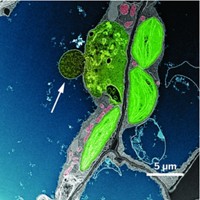Advertisement
Grab your lab coat. Let's get started
Welcome!
Welcome!
Create an account below to get 6 C&EN articles per month, receive newsletters and more - all free.
It seems this is your first time logging in online. Please enter the following information to continue.
As an ACS member you automatically get access to this site. All we need is few more details to create your reading experience.
Not you? Sign in with a different account.
Not you? Sign in with a different account.
ERROR 1
ERROR 1
ERROR 2
ERROR 2
ERROR 2
ERROR 2
ERROR 2
Password and Confirm password must match.
If you have an ACS member number, please enter it here so we can link this account to your membership. (optional)
ERROR 2
ACS values your privacy. By submitting your information, you are gaining access to C&EN and subscribing to our weekly newsletter. We use the information you provide to make your reading experience better, and we will never sell your data to third party members.
Environment
Getting to the root of leaf streaks
April 9, 2007
| A version of this story appeared in
Volume 85, Issue 15
Plant leaves aren't always uniformly green; some have streaks of white or yellow, a characteristic known as variegation. A new study proposes that a factor influencing variegation is the balance between synthesis and degradation of proteins involved in photosynthesis (to appear in Plant Cell, DOI: 10.1105/tpc.106.049270). Chlorophyll, the green pigment in protein photosystems, uses light energy to initiate electron transfer, but eventually light damages the proteins, says Wataru Sakamoto, a plant biologist at Okayama University in Japan. Variegated mutants of the model plant Arabidopsis do not produce an important protease that breaks down these damaged proteins. Without the housekeeping protease, inactive proteins accumulate, disrupting the membrane where chlorophyll normally resides and inhibiting the production of new photosystem proteins. The result is loss of the green color. But plant cells also have some backup protein housekeepers, so the threshold for photosystem disruption-and color change-is variable. Time and less light also allow the backup housekeepers to restore active photosystems and the green color, Sakamoto notes.





Join the conversation
Contact the reporter
Submit a Letter to the Editor for publication
Engage with us on Twitter